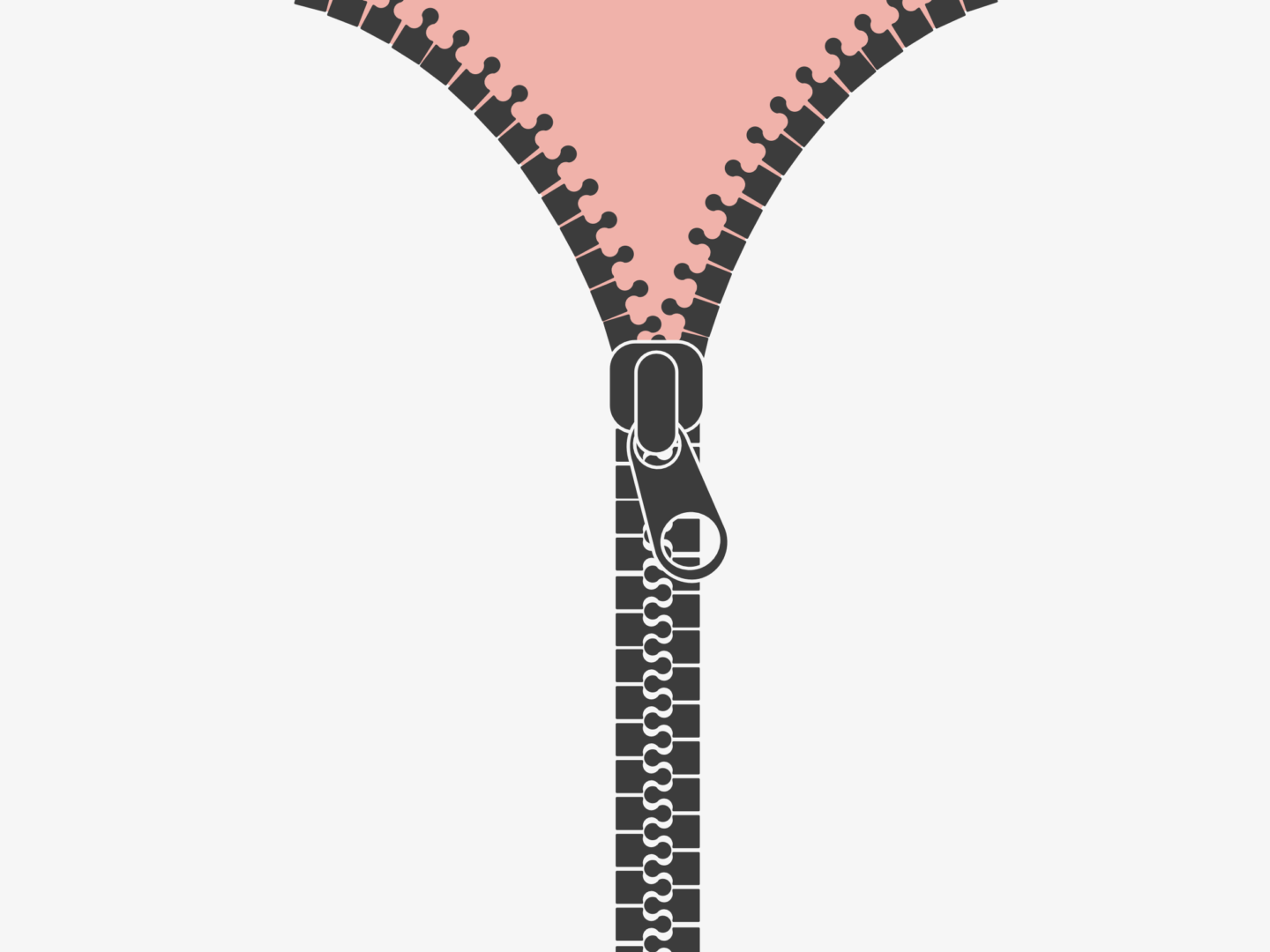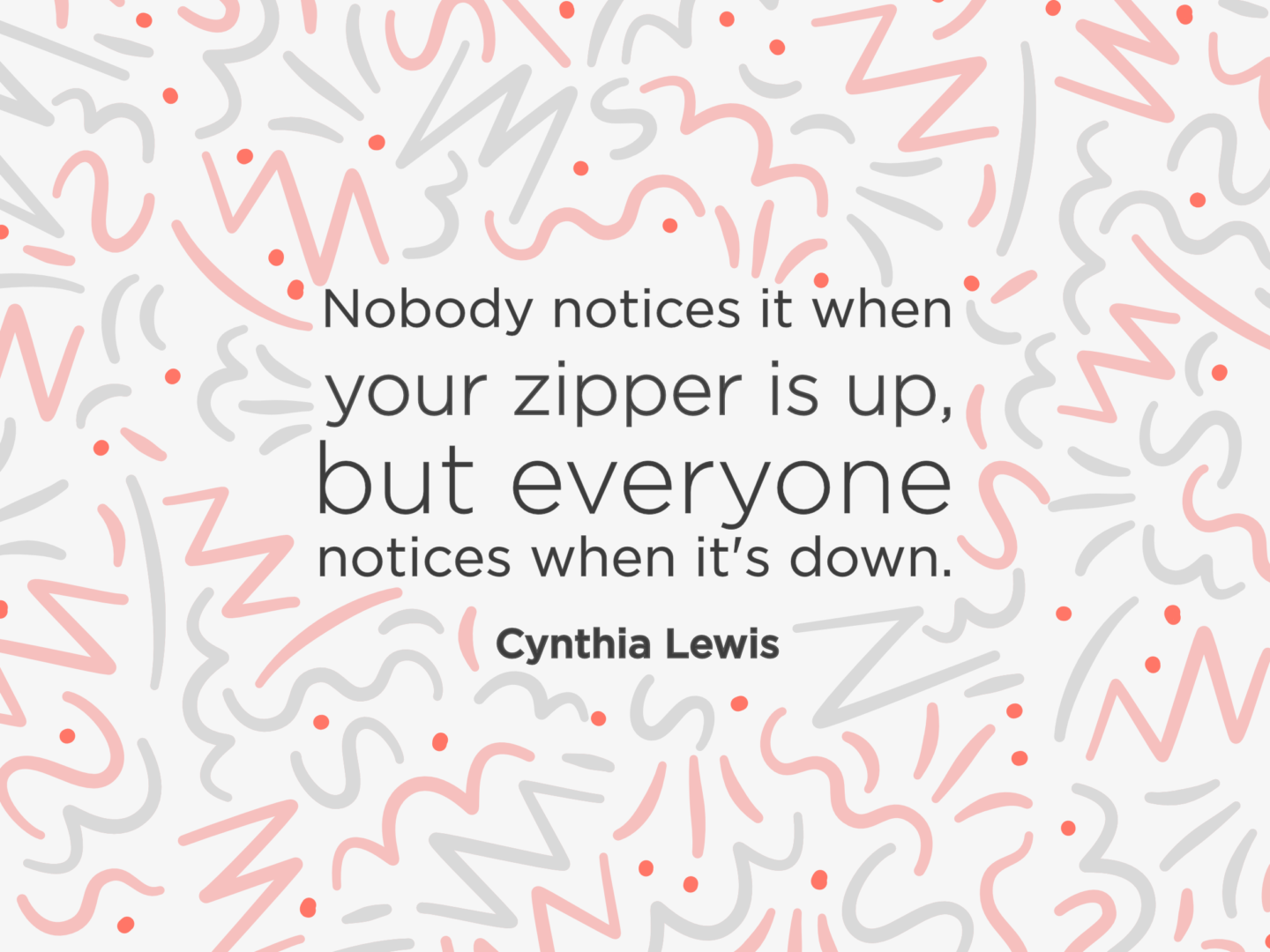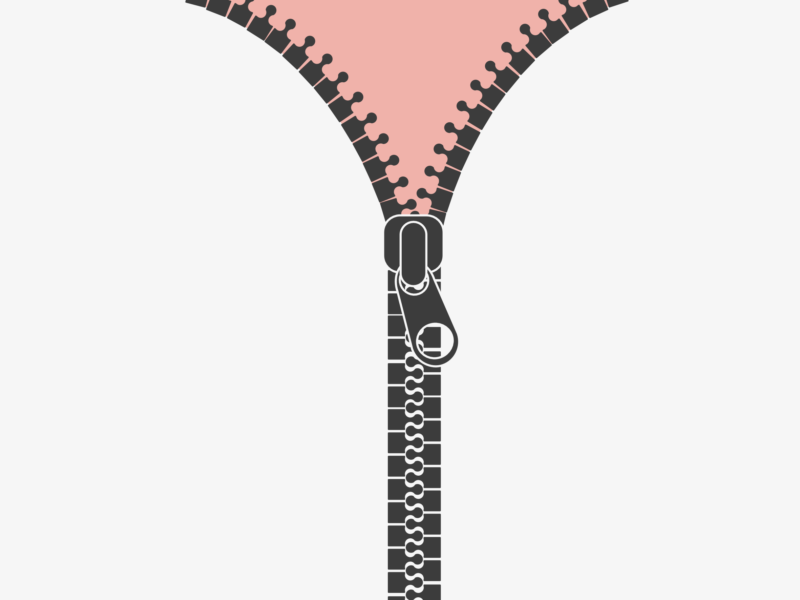The humble zipper helps most of us get our lives, and our trousers, together every single day. It’s a simple device that revolutionised clothing and has been the fly-est fastening (sorry) around since the 1930s. But how did the zipper come about?
The story of the zipper begins at the same time and with the same man as the sewing machine. In 1851, Elias Howe received the patent for a ‘Automatic, Continuous Clothing Closure’ which resembled quite closely the zipper we use today. However, instead of pursuing his ‘Continuous Clothing Closure’ Howe got swept up in the promotion and success of the sewing machine, without which we probably wouldn’t have the zipper anyhow.
Whitcomb Judson took up Howe’s mantel forty years later with his ‘Clasp Locker’ a device which was very similar to Howe’s ‘Continuous Clothing Closure’ but made specifically for shoes. Judson debuted his invention at the 1893 World’s Fair in Chicago, but it was an unsuccessful trip. Judson couldn’t get his demo ‘Clasp Locker’ to stay closed and thus no one wanted to buy it. Despite this set back, Judson founded the Universal Fastener company and was the first person to take a zipper to market, arguably making him the father of the zipper.
 That said, it wasn’t until Gideon Sundback took a stab at the zipper that it got the interlocking teeth we rely on now to keep our trousers up. Sundback’s interlocking teeth didn’t come apart as easily as Judson’s meaning his was a more secure fastening. Not only that but, he also increased the number of fastening elements to 10 per inch to further increase the security and to make the sliding motion smoother. Sundback patented his design in 1917, and we’re still using almost exactly the same design 100 years later.
That said, it wasn’t until Gideon Sundback took a stab at the zipper that it got the interlocking teeth we rely on now to keep our trousers up. Sundback’s interlocking teeth didn’t come apart as easily as Judson’s meaning his was a more secure fastening. Not only that but, he also increased the number of fastening elements to 10 per inch to further increase the security and to make the sliding motion smoother. Sundback patented his design in 1917, and we’re still using almost exactly the same design 100 years later.
However, Sundback’s invention was known as a ‘Separable Fastener’ not a zipper. It was B.F. Goodrich’s marketing campaign in 1923 which gave the contraption the name we know now. It was a shortening of his slogan “Zip ‘er up”, with “zip” mimicking the sound the zipper made when it was fastened.
After Goodrich popularised the zipper as a means for securing rubber galoshes, it quickly took off across the clothing industry. Ever the trailblazers, mothers were the first to really buy into the zipper trend, as they made it easier for children to dress themselves. Zippers then spread to adult clothing and bags. The big turning point in the popularity of the zipper came in 1937 when they beat out buttons in the battle of the fly, and became the preferred fastening for trousers over buttons. The zipper eventually became so popular later that decade that everyone who was anyone, from French fashion designers to Esquire magazine were praising the zipper as a revolutionary style staple.

But where does YKK come into it? If you own a piece of clothing with a zipper in, it will, more likely than not, be stamped with the letters YKK. Those letters stand for Yoshida Kogyo Kabushikikaisha who are a Japanese zipper manufacturer who are responsible for the creation of over half of the zips sold in the world*. That’s more than 7 billion zippers every year. They’re so popular with manufacturers because they make every element of the zipper in house using their own custom built machines, right down to smelting their own brass, and have been making zippers since 1934. This all means that they’re trusted for creating consistent quality, which means a lot when the quality of a zipper can make or break a garment’s usability.
So, in conclusion, the zipper passed through many hands, in relatively similar forms, just waiting until its moment came. Once again, as in other design stories I’ve written about, marketing played a huge part in making the zipper a design classic. Even though it was a fashion, nay life, changing invention it still needed to be sold at the right time to the right people to really take off.
I think I’d also like to note the fact that the more of these design stories I write, the more I’m noticing the power of mothers and housewives to make a product a true staple – they were the first converts to Dr Martens, they championed the t-shirt because it was cheaper and easier to clean for children, and they bought clothes with zippers on to encourage kids to dress themselves. This might have to be something I do some more digging into.
As ever if there’s anything you want to see a design story of in the future do let me know!
Key Sources
- Who Invented the Zipper?, Wonderopolis
- The Fasten-ating History of the Humble Zipper, Entrepreneur
- The Up and Down History of the Zipper, Smithsonian Libraries
- The History of the Zip, GQ
- Forget Not the Mighty Zipper, Sapiens
- Why Do So Many Zippers Say YKK?, Slate
*Ironically the majority of their zippers are now manufactured in Qiaotou, south of Shanghai, which is known as the button capital of the world as it claims to make almost two-thirds of the buttons produced globally.



Well this was really fascinating – thank you!
Thanks bean x
I think my favorite things about these design stories is how it makes you appreciate things you often overlook in your day to day life. Like, I had to know zippers haven’t existed forever, but I’ve never really thought how they came to be and how annoying life could be without them until I read this post. Taking the time to learn the stories behind these little things via your blog posts is a nice way to remind myself that there is something good to be found in even the most mundane of things!
I’m so glad it’s called a zipper though. Separable Fastener definitely doesn’t flow off the tongue, haha.
That’s exactly why I started this series, I wanted to find out more about the little things that actually make up a big part of my day and I overlook. 100% agree that the separable fastener might not have caught on quite as quick
Haha what funny story! 🙂
x finja | http://www.effcaa.com
So glad you enjoyed it Finja!